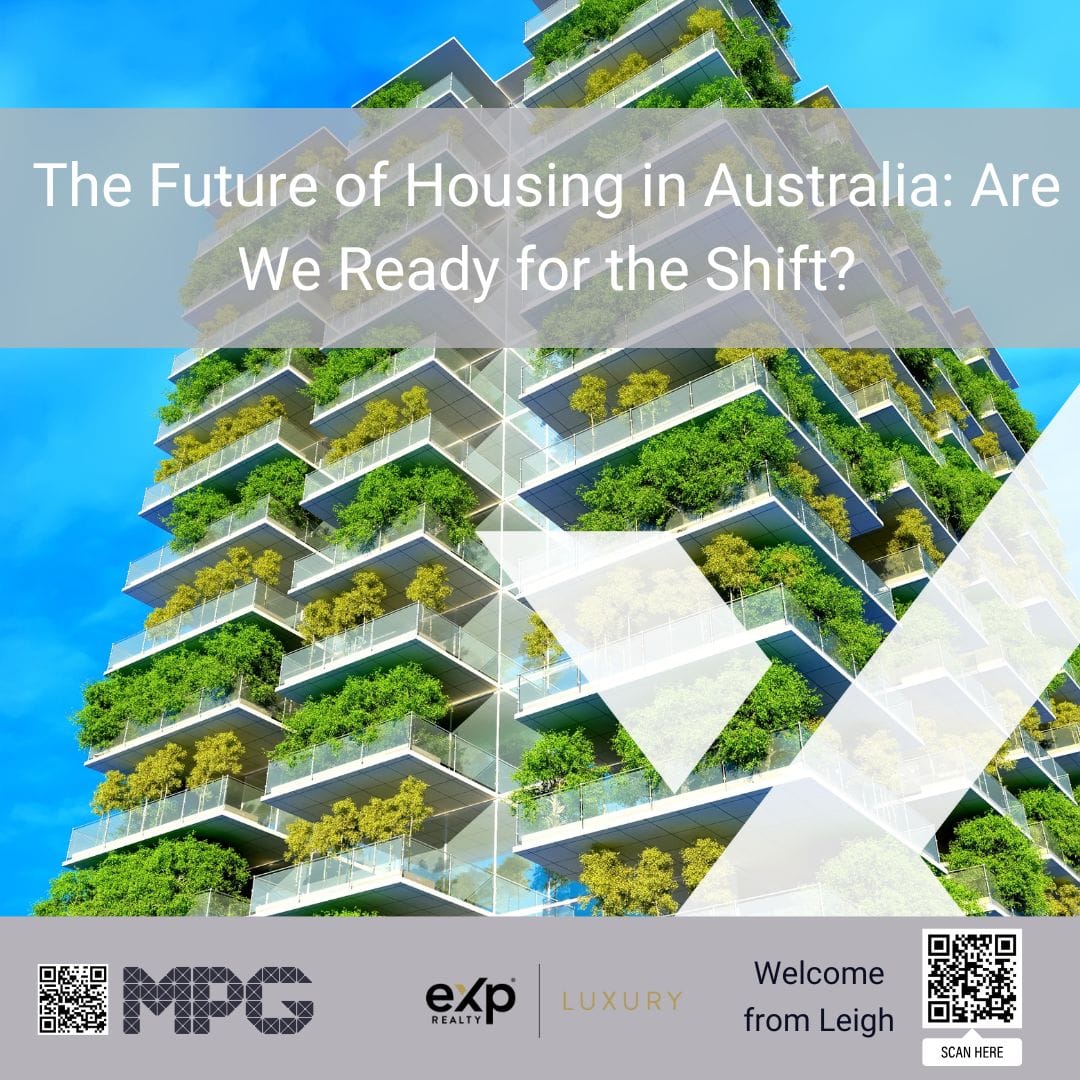The Future of Housing in Australia: Are We Ready for the Shift?
By Leigh Martinuzzi | Martinuzzi Property Group – eXp Australia
Australia’s obsession with space is no secret. For years, we’ve topped the global charts for building the biggest homes—bigger than those in the US, UK, and much of Europe. But as Michael Matusik recently highlighted in his latest piece, How Big Is Your Home?, this trend may no longer be sustainable.
In fact, we’re already seeing signs of change. And while it may be a hard pill to swallow, the reality is: we may not have a choice.
Big Homes, Big Problems
According to Matusik, the average new home in Australia is 237m². To put that in context, that’s about 20% bigger than new homes in the US. But here’s the catch: our household sizes have been shrinking. The average Australian home now has just 2.5 people living in it—down from 3.6 in the 1960s. That means more space per person, more cost per person, and more strain per household.
When I bought my first home in a small country town, it was modest—affordable, on a good block, and exactly what we needed. It didn’t stretch us financially, and it allowed us to build slowly. But when I got into real estate, I quickly noticed a different trend. Young couples—first-home buyers—purchasing large, elaborate homes straight out of the gate. I’d find myself thinking, Wow… that’s ambitious. Not wrong, but ambitious.
Each to their own, of course. But for me, a home was always about comfort, not competition.
Request Your Free Market Appraisal Today!
When Is Enough… Enough?
Over time, I moved into larger properties myself, as circumstances allowed. But even now, I live by the same rule: don’t overextend. The debt burden of trying to ‘have it all’—a bigger house, a fancier lifestyle—isn’t worth the pressure. And I know I’m not alone in thinking this way.
But there’s a broader shift happening. Housing affordability has declined dramatically over the past few decades. Matusik’s data shows that land sizes have shrunk by over 50% since the 1990s—from 1,000m² blocks to as little as 250m² in some urban areas. And build costs? They’ve surged by over 40% in the past few years alone. It’s no longer just a matter of choice—it’s necessity.
We’re starting to see that play out across Australia. Smaller homes. Smaller blocks. More duplexes, townhouses, and apartments. And policies that try to bridge the affordability gap—like the federal government’s shared equity scheme, where the government helps fund 30–40% of the home purchase for eligible buyers.
It all sounds helpful. But I can’t help wondering—are we solving the right problem? Or are we just digging the debt hole deeper?
Rethinking the Dream
There’s no doubt Australians still value the dream of homeownership. But perhaps it’s time to redefine what that dream looks like.
One part of the solution lies in how we build. More efficient, sustainable building methods. Modular housing. Better design that uses space intelligently. Reducing the cost of construction will be critical to making housing more accessible without simply increasing debt levels.
Another part lies in where we live. The cities are crowded and expensive. Regional areas, if supported by strong infrastructure and remote work opportunities, could provide the space and lifestyle many families still crave—without the massive price tag.
And finally, we may need to shift our expectations. Do we need 4 bedrooms and a media room? A three-car garage? Two dining spaces? Or do we need liveable, practical homes that fit our actual needs—financially, socially, and environmentally?
Sunshine Coast Home Sellers and Buyers Guide.
A Shift in Culture
One of the most profound points Matusik makes is that housing isn’t just about economics—it’s about culture. For decades, we’ve linked bigger homes to success. But with rising costs, environmental concerns, and shifting demographics, perhaps success in the future will be defined differently: by flexibility, affordability, community, and sustainability.
We’re already starting to see the conversation move this way. Discussions about 15-minute neighbourhoods, shared green spaces, and integrated transport hubs are becoming more mainstream. So are multi-generational living arrangements—something that used to be common decades ago and is now making a comeback, albeit for different reasons.
Personally, the idea of multi-generational loans still makes me nervous. It suggests that we’ve reached a point where one generation can’t afford housing without the help of the next—and vice versa. That’s not a sustainable trajectory.
Where to from Here?
As a real estate professional, I see firsthand how deeply emotional and personal housing decisions are. We all want to feel secure. We want space to raise our kids, entertain friends, work from home, and unwind at the end of the day. But we need to be honest with ourselves about what we can afford—not just now, but in the long term.
That means finding a balance between lifestyle and financial freedom. It means being open to living differently—from smaller footprints to shared communities. And it means being okay with “less,” if that “less” gives us more of the things that truly matter—peace of mind, flexibility, and choice.
Because in the end, a home is about how you live, not just how much space you have.
-
Request Your Free Market Appraisal Today!
-
SUBSCRIBE to stay up to date with all the latest property insights and news.
-
The Sunshine Coast Seller’s Guide to Choosing the Right Agent
-
If you are in buying or selling mode, I’ve also created this free resource – Sunshine Coast Home Sellers and Buyers Guide.
“More Than Just Selling—An Exceptional Experience.”
Your Property | Your Story | Our Expertise
Your Dream Move is Closer Than You Think!





